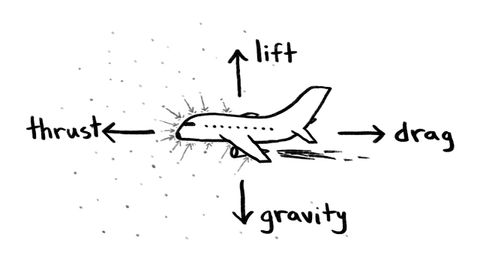飛機是怎麼飛的? How Do Airplanes Fly?
 沒有此條件下的單字
沒有此條件下的單字US /ɪˈsenʃəli/
・
UK /ɪˈsenʃəli/
- adv.本質上 ; 本來 ; 實質上;本質上;實際上
US /fɔrs, fors/
・
UK /fɔ:s/
- n.軍隊;力;強迫;武力;影響力;力量;警力
- v.t.被迫;強行打開;催生
- v.t.打;擊;攻擊;刪除
- n. (c./u.)打擊;攻擊;(棒球) 好球;罷工;全倒;攻擊
- v.i.致富;突然想出,猛然想起
US /ˈslaɪtli/
・
UK /ˈslaɪtli/
